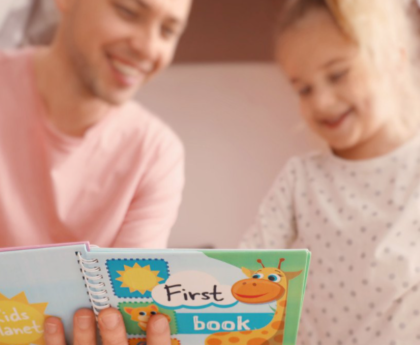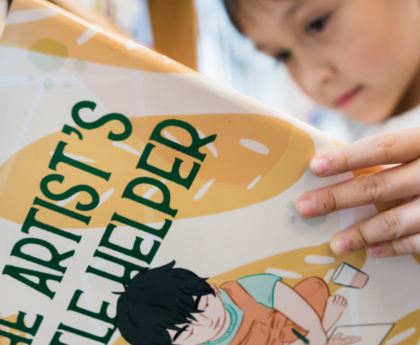How many times have you heard your kid say, “I hate to read!”? If it’s more times than you’d like to admit, this article is for you.
There are many reasons why children may appear to hate reading. There are also plenty of ways to support and motivate kids to discover a love of reading for life. Let’s take a look!
What to Do When Your Kid Hates Reading
If your child seems to hate reading, you’re not alone. A lot of kids take a while to find their spark of reading joy.
While you can’t force anyone to like or do something they simply don’t want to do, there are ways to address your child’s experience. It’s all about encouraging them to find a reading practice that suits their unique interests.
1. Identify the Reading Hurdle
First, identify the issue that may be getting in the way of your child’s willingness to read.
Consider why your child might resist books:
- Do they lack essential literacy skills?
- Do they need to feel more connected to the stories they read?
- Are the types of books they’re reading too difficult (causing frustration) or too easy (causing boredom) for their skill level?
- Is the size or amount of text on each page overwhelming to them?
- Do they have a calm, welcoming space to retreat to when it’s time to read?
- Do they have an unknown vision issue impeding their ability to see the books and words?
Ask your child about why they feel so strongly against reading. Instead of trying to change their opinion, try to reach an understanding first. This will provide insight into what’s going on.
Talk to your child’s teacher about what they observe in the classroom. Your child may be fully capable of reading on their own, they just might lack confidence or genuine interest.
On the contrary, some children’s avoidance of reading could be a symptom of learning difficulties. Kids with learning or attention disorders like dyslexia, dysgraphia, or ADHD often benefit from specialized treatment and support.
Aside from refusing to read, common signs of learning disorders can include anxiety at school, stomach aches, difficulty paying attention, and challenges with reading or writing. Consider getting your child a professional evaluation if they seem to be struggling in this way.
2. Encourage Your Child’s Sense of Agency as a Reader
Sometimes children dislike reading because they feel there’s too much pressure on them to “perform.” If all your child knows is being told to read in class to receive a grade or being forced to read at home to complete homework, they likely view reading as a chore—something that they have no say in.
Try switching up the act of reading. Make it feel like something they get to choose:
- Give your child the option to read to themselves for 10 minutes after dinner or 20 minutes with you before bed, taking turns reading the pages out loud.
- Let your child choose between reading a comic book or a storybook.
- Ask your child what favorite interest or role model they’d like to learn about. Shop for books online together and find a book about their interest.
- Attend the library and help your child sign up for their own library card that they get to use. Encourage them to find books to take home.
- Allow your child to play fun, educational reading apps in place of reading time several nights per week.
Giving your child agency over what and how they read can make the experience more empowering, exciting, and enjoyable for them.
3. Present Various Reading Options
Whether your child is still learning to read or already proficient, building up their “reading stamina” can take time. It takes trial and error. It takes practice.
Sometimes, kids need to form a healthy reading habit by starting small. Instead of expecting them to dive straight into chapter books, give them various options that feel more approachable.
Offer to read aloud to your child if it helps them fully engage in the book. Similarly, you can let them listen to audiobooks at home or in the car. If they love the book, try alternating the experience: one chapter of reading, one chapter of audiobook, and so on.
Give your child the freedom to read other materials for fun, too:
- Comic books
- Graphic novels
- Kids’ magazines
- Game instructions
- Recipes
- Joke books
- Sports cards
- Poetry
- Lyrics of songs they enjoy
- Websites of their favorite TV show or kid’s brand
When it comes to reading material, various options are everywhere. As your child continues to read books in class and for homework, get creative and introduce reading “outside the book” as a gateway to reading enjoyment.
4. Increase Exposure to Books and Literacy Experiences
The earlier you expose your child to consistent literacy activities, the better. While literacy-rich environments don’t guarantee your child will become passionate about reading, they can positively influence development and perspective.
Here are some ways to surround your child with books in a way that fosters good attitudes toward reading:
- Attend group reading sessions at the children’s library. Your child can observe other kids their age enjoying books and gain new opportunities to join the fun.
- Go to the library and let your child check out as many books as they can fit into a backpack. They might find several books that interest them and then decide to read one for fun! One book out of the bunch is a lot better than not reading at all.
- Frequent local bookstores and browse the aisles with your child, whether it be a well-known franchise or a small used bookstore.
- Play board games that involve reading and language, such as Boggle, Scrabble, Tall Tales, and Apples to Apples Junior.
- Create a family library at home and give your child their own section.
If the only place your child encounters books is at school, they may need help unlearning the belief that reading equals work. Instead, help them realize that reading is an amazing part of life.
5. Normalize Laid-Back Reading
Take the formality and anxiety out of reading while at home. Don’t turn reading into a big performance or a “test.”
It’s been observed that a casual, positive reading environment at home can motivate kids to read more. Approach reading as a relaxing, leisurely activity with your child, ideally starting at a young age.
Model reading for fun and play. Let your child see you reading for fun whenever you get the chance. Let them hear you talking to others about what you’re reading. Involve your child in interesting, age-appropriate things you read. Acknowledge your child’s reading skills when they share something interesting or insightful they’ve read.
How to Get Kids to Read for Fun
Getting kids to read for fun can be tough, especially if they have a negative attitude or experience associated with books. But there are many ways to instill a love of reading in kids, no matter what stage of development they’re in.
Want more inspiration for kids’ reading activities at home? Follow us at reading.com! If you have a child who’s still learning to read, check out our science-backed reading app for free.





